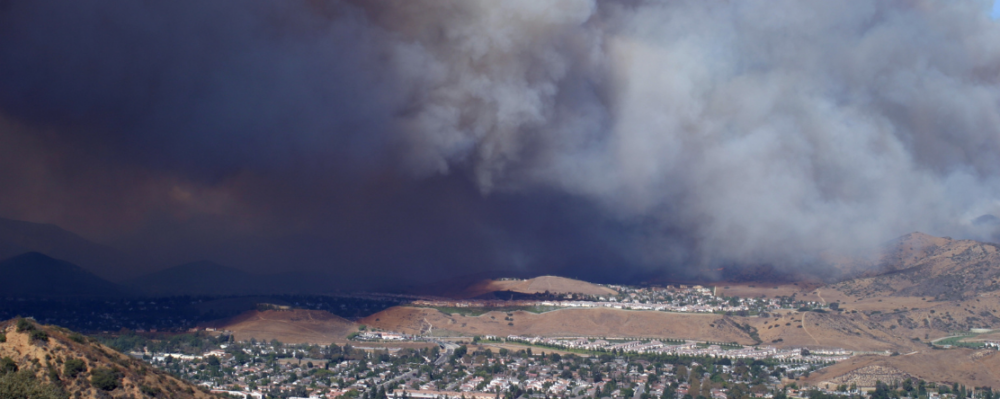
In the News
Breaking Down Barriers – Parks and Recreation Connecting with Public Health
-
Focus Areas
Healthy Communities -
Issues
Health in All Policies, Physical Activity -
Programs
State of Equity
As park and recreation professionals increasingly come to regard themselves as part of a system of health providers in their communities, one of the challenges they face is the difficulty in making the connection to their counterparts in public health. Why such collaboration remains difficult is puzzling—a general lack of knowledge of corresponding scopes of duties on behalf of both professions is one obvious cause—but there are signs that the positive relationships being developed in some cities and counties can lead the way to much deeper cooperation that measurably benefits the health of the public, fulfilling the missions of both public health entities and park and recreation agencies.
According to the National Association of County and City Health Officials (NACCHO), there are approximately 2,800 local health departments across the country, which generally have five categories of responsibility for public health: (1) Conducting community assessments to understand specific health issues and barriers to healthy activities in the population it serves; (2) Investigating health problems and health threats; (3) Preventing, reducing and containing adverse health effects from communicable diseases, disease outbreaks from unsafe food and water, chronic diseases, environmental hazards and risky health behaviors; (4) Conducting emergency preparedness activities; and (5) Implementing health promotion programs.
If you were to compare the categories of responsibility that park and recreation agencies have in their communities, such as providing parks and public open spaces for residents; protecting air and water quality through a system of protected lands, including stream valleys and floodplains; providing a comprehensive program of recreation services for residents; and serving the needs for recreation, physical activity and conservation for persons of all abilities and all ages, you would certainly agree there is major alignment with these areas of responsibility between public health and parks and recreation. However, working together for the health of the community remains challenging.
Growing Awareness of Essential Role in Health and Wellness
Dee Merriam, a community health planner for the Centers for Disease Control and Prevention (CDC) with a background in parks and recreation, wrote a recent article in the Journal of Environmental Health about how public health professionals can better work together with park and recreation professionals. She says, “Everyone agrees parks and recreation provides a health benefit.” Yet, she recognizes that, “A lot of public health agencies don’t see the value of what parks and recreation can bring to a community.”
Part of the reason for this lack of recognition of what parks and recreation does for community health is that the awareness of the importance of health to the mission of parks and recreation has been slow to develop. Ten years ago, if you asked park and recreation professionals if they were part of a system of health providers, you would have been met with a blank stare of incomprehension. If you ask the same question in 2016, you would find almost universal agreement that parks and recreation are all about health. In the past decade there has been a groundswell of awareness within the field of parks and recreation that health and wellness should be important, mission-critical priorities, and that the public very much wants these outcomes.
Mutual Goals Promote Greater Cooperation
Alex Stone, a planner for the Rivers, Trails and Conservation Assistance (RTCA) program of the National Park Service, which provides technical assistance to state and local governments, says, “We all want to have healthier communities,” while pointing out that there have not been good ways for parks and recreation to validate improvements in community health. “The question for us was how to integrate health in a meaningful way into our outdoor recreation planning process.” She described efforts in Washington State that began with service on a health advisory committee alongside state and local representatives. This led to development of two pilot projects, one in Moses Lake and one in Mt. Vernon, north of Seattle. “It was clear to us that communities wanted to expand access to opportunities for improving health,” Stone says.
Stone noted how even the vocabulary proved to be a barrier at the outset. What was an “intervention” and what did this mean to communities? Andrea Irland, an outdoor recreation planner for RTCA working in Ohio, said that the data-driven aspects of public health can put off park and recreation agencies not used to working in that framework. She agreed that terms like “social determinants of health” can also be daunting. However, she noted that she has seen much progress in the level of mutual understanding. Health departments are thinking upstream, being more proactive and less reactive. They are now thinking about how they can be instrumental in helping to seek grants, for example, for projects such as the design and construction of a local trail system.
RTCA worked with CDC to produce a workbook targeted at both park and recreation professionals, as well as health practitioners. The Parks, Trails and Health Workbook — A Tool for Planners, Parks and Recreation Professionals, and Health Practitioners is rich with information on how to develop proven methods of practice to enable cooperation between health agencies and parks agencies (see sidebar).
Health in All Policies Takes Shape
As awareness of the need for comprehensive health initiatives has grown, public health agencies and other health providers have begun to promote the notion of “Health in All Policies (HiAP),” a strategy to address the underlying conditions that influence health. These conditions are sometimes called the social determinants of health. The HiAP strategy also addresses issues of equity — both health equity and social equity.
Leading national public health organizations such as the American Public Health Association (APHA), NACCHO and the Public Health Institute, support HiAP as a means of improving public health through collaborative approaches. Fundamentally, the belief is that in order to improve the health of communities, health must be incorporated into all aspects of decisionmaking across all sectors.
While public health agencies have been leading the charge to improve health, HiAP points to non-traditional health partners such as parks, planning, housing and transportation, as being vital partners in the effort to change policies and environments that promote health. The challenge to implementing a HiAP approach is that all sectors must work together to improve underlying conditions that affect health and reduce disparities that now exist.
Examples of Collaboration Show Enormous Potential
One of the more successful collaborations between a health agency and a park and recreation department is taking place in Helena, Montana. Their cooperation has been enabled by the fact that the heads of both agencies work together in a variety of ways through the city/county administrative structure. “We have a strong philosophy of working together,” says Amy Teegarden, director of parks and recreation for the city of Helena. “We have many compatible goals in the effort to make our community more healthy, but we really began to work together when we established a health community coalition.
“The health department became our partner when we started a tobacco-free parks policy. We wanted to demonstrate how much smoking was occurring in parks. A group of kids and teens went to a park we designated and picked up all the cigarette butts they could find. Their volunteer project led to some powerful photos that became background material for the recommendation to the city commission to implement a tobacco-free parks policy,” Teergarden says.
“The best benefit of the partnership between our respective departments has been the success we had in developing a solid cooperative relationship,” Teegarden continues. “This cooperation opened the door to more tools and resources. For example, we have an awesome trail system, but it is not easy to find trail heads. Our health department led the effort to gain APA and APHA support for a $100,000 grant to develop an active living wayfinding system and communities plan to increase health equity by guiding residents to opportunities for physical activity and nutritious food.” Other examples included development of community gardens, permaculture sites and an edible forest park in cooperation with the health department.
Janet Bartnik, director of parks and recreation in Liberty, Missouri, said her mayor requested collaboration between the parks and recreation and health departments from day one. “We had work to do, and negative perceptions to overcome,” Bartnik says. “[The health department] saw us as tree-huggers or the agency that handed out the balls in the gym. We saw them as the agency that handed out birth and death certificates, checked our concession stands and tested our pools. Now, after working with them, I believe that our health department can be one of our greatest resources.” One of the pivotal factors that enabled better cooperation was the creation of a community health coalition. “The health department has all the data we need to make smart decisions,” Bartnik says. “With their help, we can model healthy behaviors to implement in communities through a strategic health planning network.”
Bartnik said that their cooperation has transcended many barriers and that they now each espouse the philosophy that they need to work together to create the climate to say, “The healthy choice is the easy choice.” She pointed out that inviting the public health department to collaborate on park and recreation master plans was a great example of implementing a HiAP strategy. Their community health coalition was the catalyst for getting a grant to look at how developments were planned and whether sidewalks on one side of the street only or cul-de-sacs led to less walking and biking and thus less access to parks. “We are working at a higher level of performance, and outcomes are truly a part of the process to achieve the larger goal of improving the health of the community,” she says.
From the point of view of the park and recreation professional, finding opportunities to work with public health agencies may be challenging, but the results are well worth the effort. As Merriam says, “You have to break down the barriers and be willing to think out of the box — and don’t give up if you are not successful at first.”
Richard J. Dolesh is NRPA’s Vice President of Conservation and Parks. Zarnaaz Bashir, MPH, is NRPA’s Director of Strategic Health Initiatives.
Additional Resources
- Parks, Trails and Health Workbook — A Tool for Planners, Parks and Recreation Professionals and Health Practitioners is a workbook prepared by the Rivers, Trails and Conservation Assistance Program (RTCA) of the National Park Service and the Center for Disease Control and Prevention (CDC). This work-book is intended to provide ideas and examples of to how to integrate public health considerations into the planning and development of parks and trails.
- Health in All Policies: A Guide for State and Local Governments was created by the American Public Health Association, Public Health Institute and the California Department of Public Health to provide guidance on using the HiAP approach to improve the health of populations in communities nation-wide.
Originally published by Parks and Recreation
More Updates
Work With Us
You change the world. We do the rest. Explore fiscal sponsorship at PHI.
Support Us
Together, we can accelerate our response to public health’s most critical issues.
Find Employment
Begin your career at the Public Health Institute.



